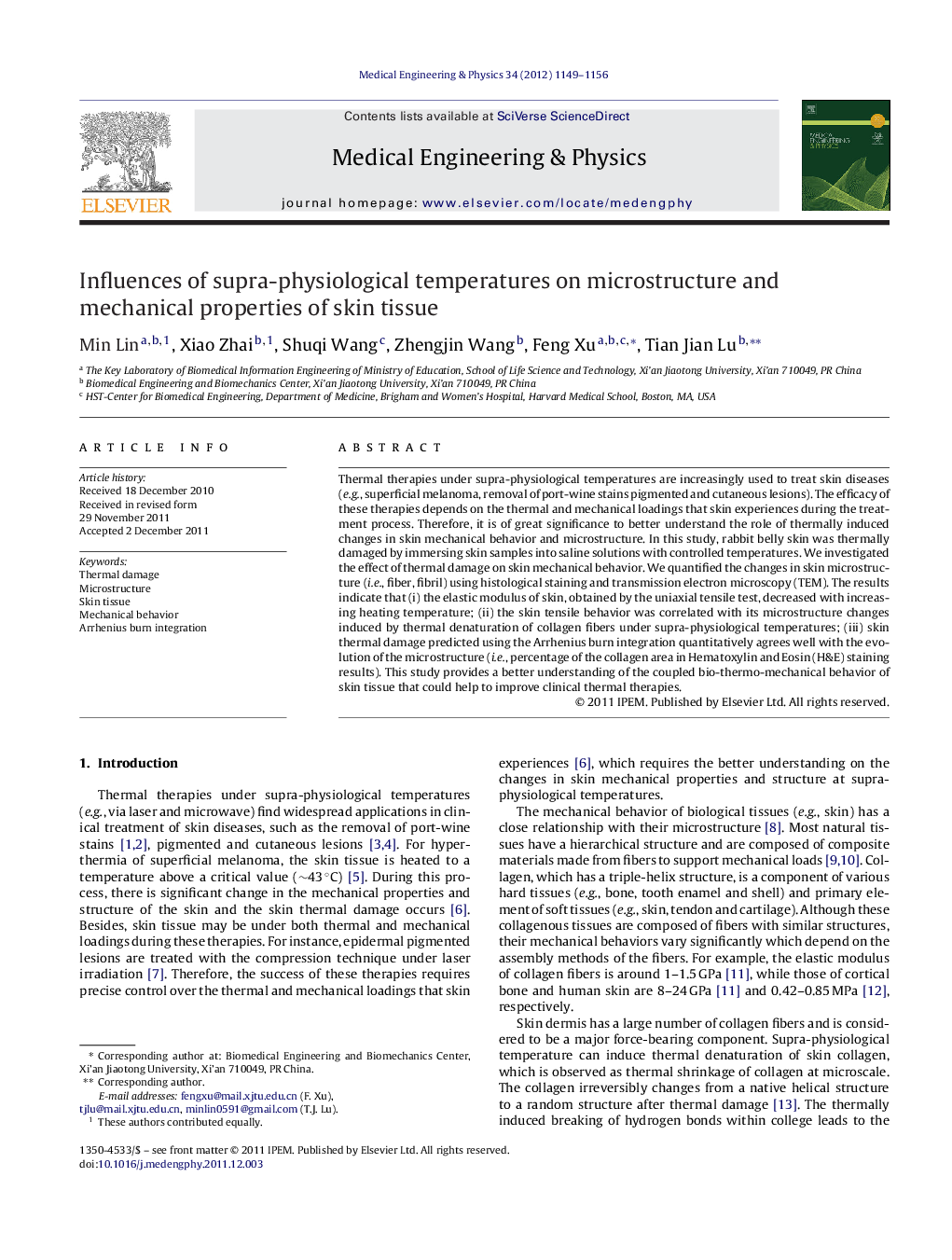| Article ID | Journal | Published Year | Pages | File Type |
|---|---|---|---|---|
| 876289 | Medical Engineering & Physics | 2012 | 8 Pages |
Thermal therapies under supra-physiological temperatures are increasingly used to treat skin diseases (e.g., superficial melanoma, removal of port-wine stains pigmented and cutaneous lesions). The efficacy of these therapies depends on the thermal and mechanical loadings that skin experiences during the treatment process. Therefore, it is of great significance to better understand the role of thermally induced changes in skin mechanical behavior and microstructure. In this study, rabbit belly skin was thermally damaged by immersing skin samples into saline solutions with controlled temperatures. We investigated the effect of thermal damage on skin mechanical behavior. We quantified the changes in skin microstructure (i.e., fiber, fibril) using histological staining and transmission electron microscopy (TEM). The results indicate that (i) the elastic modulus of skin, obtained by the uniaxial tensile test, decreased with increasing heating temperature; (ii) the skin tensile behavior was correlated with its microstructure changes induced by thermal denaturation of collagen fibers under supra-physiological temperatures; (iii) skin thermal damage predicted using the Arrhenius burn integration quantitatively agrees well with the evolution of the microstructure (i.e., percentage of the collagen area in Hematoxylin and Eosin (H&E) staining results). This study provides a better understanding of the coupled bio-thermo-mechanical behavior of skin tissue that could help to improve clinical thermal therapies.
